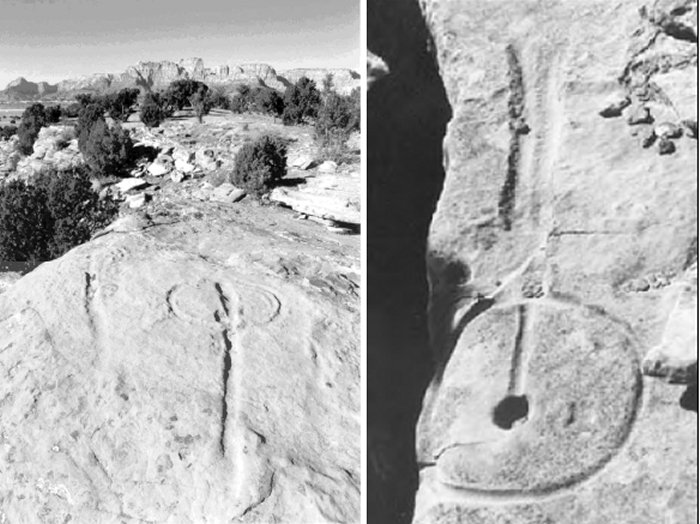Puzzling Water Glyphs Of The American Southwest – Ancient Astronomical Symbols, Directional Signs Or Something Else?
Ellen Lloyd - AncientPages.com - More than 300 peculiar petroglyphs have been discovered scattered across the American Southwest. Most of these petroglyphs are known as water glyphs in northern Arizona, southern Utah, and Nevada.
Both images: Credit: Cody Spendlove, Wikipedia, CC BY-SA 4.0
Who created these mysterious petroglyphs, and for what purpose? There are some intriguing questions, but our knowledge of the water glyphs of North America remains incomplete.
To begin with, the age of the water glyphs has not yet been adequately determined. Using x-ray fluorescence, scientists suggest that the glyphs are about 2,000 years old. Still, they could be even older than that.
Water Glyphs Are Universal In Shape And Yet Slightly Different
Who the creators of the water glyphs were is also a question no one has been able to answer yet. Perhaps these enigmatic petroglyphs were produced by Ancestral Puebloans. This prehistoric Native American civilization occupied the present-day Four Corners region of the United States, i.e., the boundaries where Arizona, New Mexico, Colorado, and Utah intersect.
Left: Waterglyph in Mohave County, Arizona. Credit: Bob Ford - Right: Waterglyph from Kane County, Utah. Credit: Gordon Hutchings
The water glyphs were first discovered and documented by photographer Bob Ford in 1996.
After this discovery, Bob Ford became very interested in these ancient markings and visited hundreds of Native American sites to learn more about the water glyphs.
The water glyphs vary slightly in size but always have the same shape, circle, or ellipse bisected by a single straight line. They are usually 48 inches long by 24 inches wide, with grooves carved half an inch to an inch deep. Researchers noticed that although the basic glyph was universal in shape, there were often modifications to how the circle(s) were drawn. Ford and other scientists who examined the water glyphs think these variations were intended to convey meaning.
Deciphering The Meaning Of Water Glyphs
It has been suggested that the Anasazi civilization created water glyphs to show the direction of water sources. In a dry area where communities were far apart, there was a need to find water supplies, and these petroglyphs could have been used as directional signs.
Ford suggested the Anasazi designed the water glyphs to navigate through the Arizona desert. If this is the case, the water glyphs could be used as a modern map to navigate the desert. The water source was the most significant issue for the Anasazi; these navigation tools could help them avoid long walks and save time.
However, not everyone is convinced that water glyphs functioned as direction signs.
Some scholars think the mysterious ancient petroglyphs served as astronomical markers.
The Anasazi were a sophisticated civilization. They began as nomadic hunter-gatherers, perhaps as early as 1500 B.C. In time, they built great cities among the sandstone cliffs. The Anasazi astronomers studied the stars, and their engineers built significant roadways, towers, and stone complexes.
Supernova pictograph panel contains three symbols: a large star (supernova), a crescent moon, and a handprint. Source
The most common theory is that the glyphs of the American Southwest were used as a solstice marker. The Anasazi watched the skies and may have created the glyphs as solstice markers, or maybe they were some ancient calendar.
According to other theories, the glyphs were used to trap birds such as the eagle and the hawk so Indians could acquire the sacred feathers they needed for religious ceremonies. Yet another option is that the glyphs played an essential role in sacrificial altars, burial customs, or other important religious events practiced by the Anasazi.
Some think the glyphs could be writings left by the Spaniards. Perhaps the conquistadors needed directional markers to avoid getting lost in the desert.
At present, we do not know the purpose of the glyphs of the American Southwest, and unraveling their secrets requires more scientific studies. We are left with speculations about these enigmatic glyphs found in so many places across the American Southwest.
Written by Ellen Lloyd – AncientPages.com
Updated on October 30, 2023
Copyright © AncientPages.com All rights reserved. This material may not be published, broadcast, rewritten or redistributed in whole or part without the express written permission of AncientPages.com
Expand for referencesMore From Ancient Pages
-
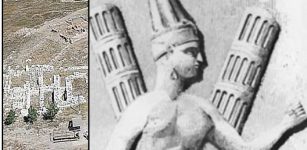 Cuneiform Tablet Unearthed In Hittite City Samuha Refers To Love And War Goddess Sausga
Archaeology | Oct 2, 2023
Cuneiform Tablet Unearthed In Hittite City Samuha Refers To Love And War Goddess Sausga
Archaeology | Oct 2, 2023 -
 Charlotte Corday And The Assassination Of Marat – Was She A Coldblooded Murderess Or Courageous Female Hero?
Featured Stories | Jun 2, 2017
Charlotte Corday And The Assassination Of Marat – Was She A Coldblooded Murderess Or Courageous Female Hero?
Featured Stories | Jun 2, 2017 -
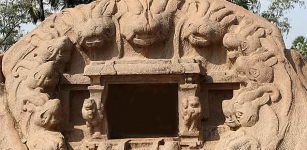 Tiger Cave: Rock-Cut Hindu Temple Complex Dated To East India’s Pallava Empire
Featured Stories | Jan 19, 2017
Tiger Cave: Rock-Cut Hindu Temple Complex Dated To East India’s Pallava Empire
Featured Stories | Jan 19, 2017 -
 Dozens Of Unique 2,500-Year-Old Ceremonial Treasures Discovered In A Drained Peat Bog
Archaeology | Jan 27, 2023
Dozens Of Unique 2,500-Year-Old Ceremonial Treasures Discovered In A Drained Peat Bog
Archaeology | Jan 27, 2023 -
 Ancient Greeks Had Great Understanding Of Weather And Climate
Civilizations | Sep 7, 2015
Ancient Greeks Had Great Understanding Of Weather And Climate
Civilizations | Sep 7, 2015 -
 Beautiful Ancient City Of Polonnaruwa With Hundred Of Tombs, Temples And Statues
Civilizations | Nov 12, 2018
Beautiful Ancient City Of Polonnaruwa With Hundred Of Tombs, Temples And Statues
Civilizations | Nov 12, 2018 -
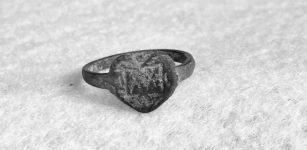 Unique Heart-Shaped Jesuit Ring At Fort St. Joseph In Michigan
Archaeology | Sep 17, 2022
Unique Heart-Shaped Jesuit Ring At Fort St. Joseph In Michigan
Archaeology | Sep 17, 2022 -
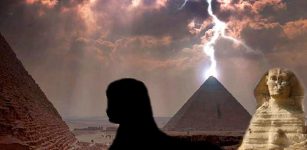 Did The Great Sphinx Of Giza Have A Twin And Was It Destroyed By A Lightning Strike?
Featured Stories | Dec 23, 2017
Did The Great Sphinx Of Giza Have A Twin And Was It Destroyed By A Lightning Strike?
Featured Stories | Dec 23, 2017 -
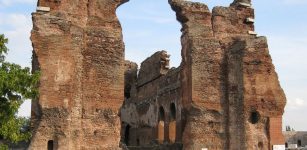 Pergamon – One Of ‘Seven Churches Of Asia’ With Great Library And Sophisticated Water Supply System
Civilizations | Jul 25, 2018
Pergamon – One Of ‘Seven Churches Of Asia’ With Great Library And Sophisticated Water Supply System
Civilizations | Jul 25, 2018 -
 Why Is La Ferrassie Man A Unique And Famous Neanderthal?
Featured Stories | Oct 30, 2023
Why Is La Ferrassie Man A Unique And Famous Neanderthal?
Featured Stories | Oct 30, 2023 -
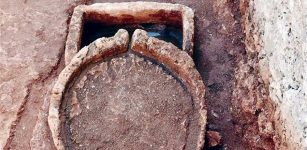 Oldest Olive Oil Press Facilities Owned By Mysterious Woman ‘Arete’ Unearthed In Antalya, Turkey
Archaeology | Apr 2, 2017
Oldest Olive Oil Press Facilities Owned By Mysterious Woman ‘Arete’ Unearthed In Antalya, Turkey
Archaeology | Apr 2, 2017 -
 Remarkable Ancient High-Tech Genetic Disc Could Re-Write Ancient History
Artifacts | Sep 15, 2014
Remarkable Ancient High-Tech Genetic Disc Could Re-Write Ancient History
Artifacts | Sep 15, 2014 -
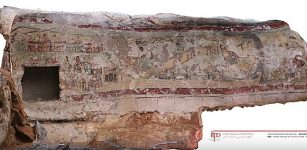 1,800-Year-Old Richly Painted Tomb Unearthed In Northern Jordan
Archaeology | Oct 1, 2018
1,800-Year-Old Richly Painted Tomb Unearthed In Northern Jordan
Archaeology | Oct 1, 2018 -
 Huge 40-Meter Long 16th Century Tunnel For Looting Was Exposed Inside Tower Tomb
Archaeology | Jul 15, 2019
Huge 40-Meter Long 16th Century Tunnel For Looting Was Exposed Inside Tower Tomb
Archaeology | Jul 15, 2019 -
 Svarog: God Of Cosmic Fire And Ruler Of The Sky In Pre-Christian Slavic Pantheon
Featured Stories | Aug 15, 2017
Svarog: God Of Cosmic Fire And Ruler Of The Sky In Pre-Christian Slavic Pantheon
Featured Stories | Aug 15, 2017 -
 On This Day In History: Battle Of Cowpens Took Place – On Jan 17, 1781
News | Jan 17, 2017
On This Day In History: Battle Of Cowpens Took Place – On Jan 17, 1781
News | Jan 17, 2017 -
 Manannán Mac Lir – Irish God Of Sea, Healing, Weather And Master Of Shapeshifting
Celtic Mythology | Mar 2, 2023
Manannán Mac Lir – Irish God Of Sea, Healing, Weather And Master Of Shapeshifting
Celtic Mythology | Mar 2, 2023 -
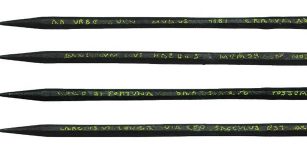 Ancient Roman Joke Inscribed On A 2,000-Year-Old Pen – Discovered
Archaeology | Jul 29, 2019
Ancient Roman Joke Inscribed On A 2,000-Year-Old Pen – Discovered
Archaeology | Jul 29, 2019 -
 Did Neanderthals And Modern Humans Meet In The Czech Republic 50,000 Years Ago?
Archaeology | Jun 17, 2017
Did Neanderthals And Modern Humans Meet In The Czech Republic 50,000 Years Ago?
Archaeology | Jun 17, 2017 -
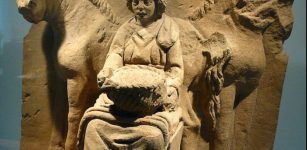 Epona – One Of The Oldest And Widely Known Celtic Deities
Celtic Mythology | Feb 26, 2018
Epona – One Of The Oldest And Widely Known Celtic Deities
Celtic Mythology | Feb 26, 2018


